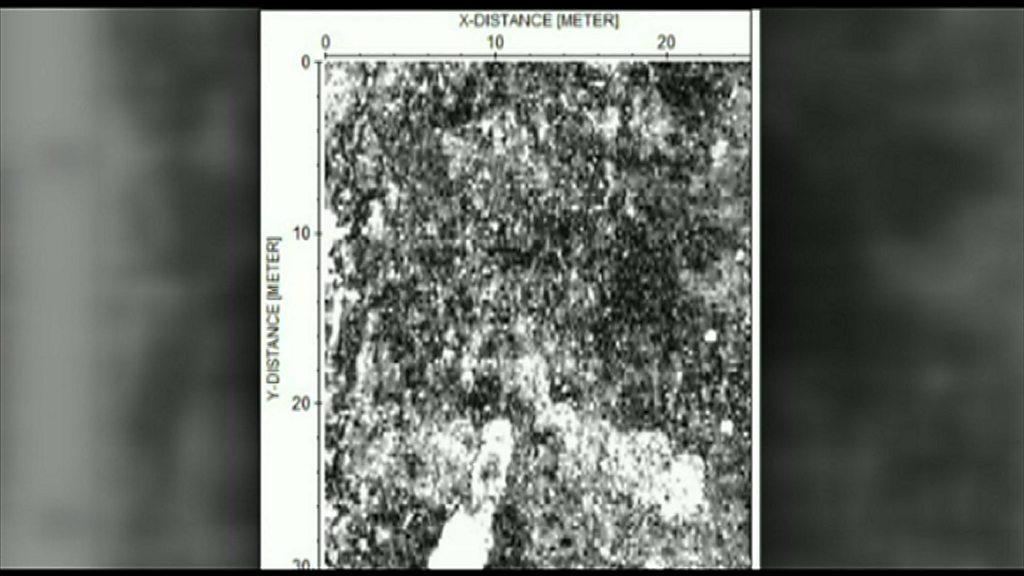Chichester Priory Park dig unearths 'Roman hot tub' remains
- Published
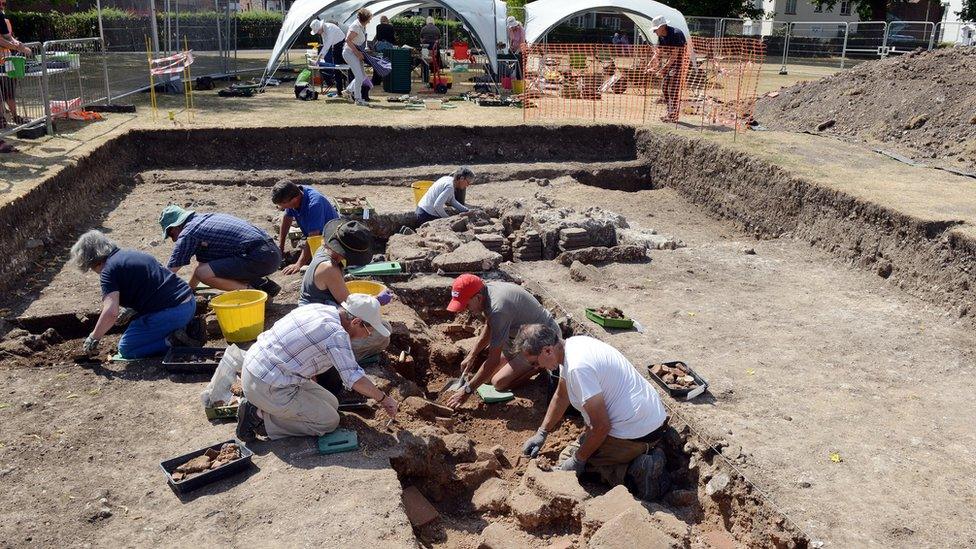
Volunteers carried out the dig in Priory Park
The remains of a hot tub big enough to hold four people have been uncovered by archaeologists in Chichester.
After the remains of three near-complete Roman buildings were found under Priory Park last year, experts suspected they would find a bath house, external.
A first dig at the park in West Sussex last year confirmed the theory, external.
A second dig has now uncovered what experts have described as a "luxurious tub made from mortar, tiles and bricks".
Initial scans revealed a townhouse and another building
Chichester District Council's archaeologist James Kenny said the size of the bath indicated it was owned by affluent people of high status.
"Just to keep it going would have required huge wealth and resources," he said.
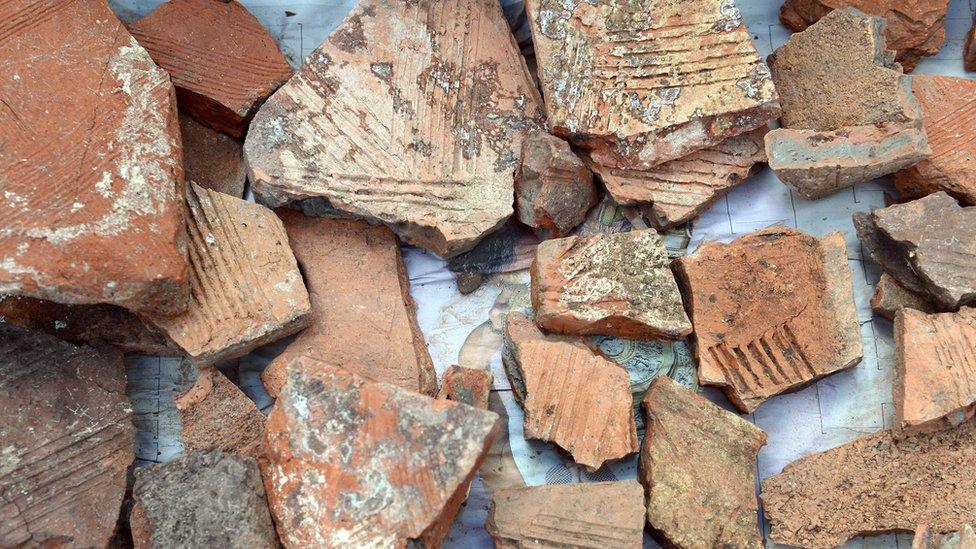
The most significant find has been part of a large hot bath - experts had thought it was a collapsed roof
"It would have been filled with really hot water, and for the owner to be able to use the bath house throughout the year, it would have required staggering amounts of charcoal for the furnace, and a considerable amount of tending and stoking to keep it going."
Mr Kenny, who led the dig with volunteers from Chichester and District Archaeology Society, said the bath house would also have had water from a mains supply, which would only have been accessible to the wealthiest people in the city.
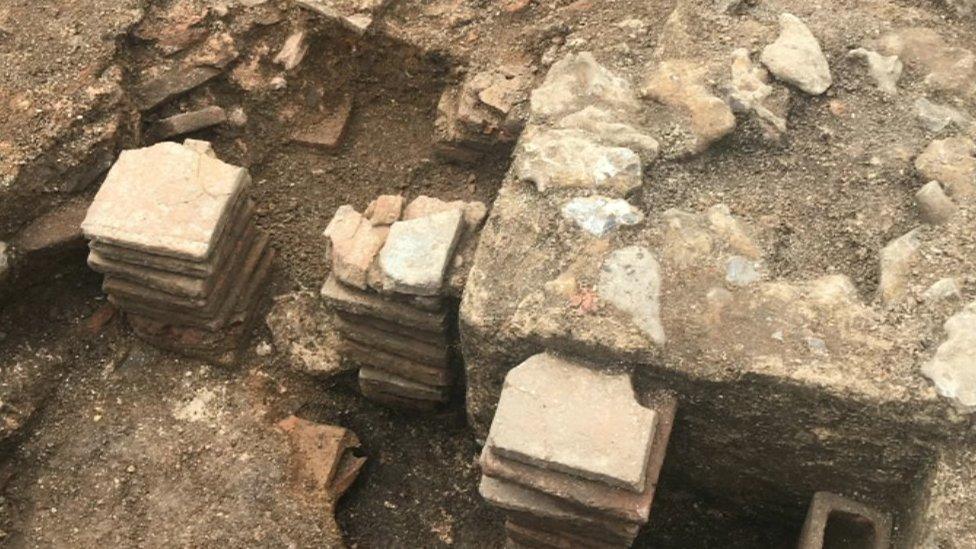
The "high status" bath suite would have been at the back of a very grand house
The section uncovered was at first thought to be part of the roof which had collapsed into the heating system - but the dig this summer revealed the fragments to be part of the hot tub.
The council believes the bath house to be of "national importance" because of the unusually good condition of the buildings under the park.
When they were first discovered, experts said they believed the only reason they had survived was because the park had never been built on.
- Published31 May 2017
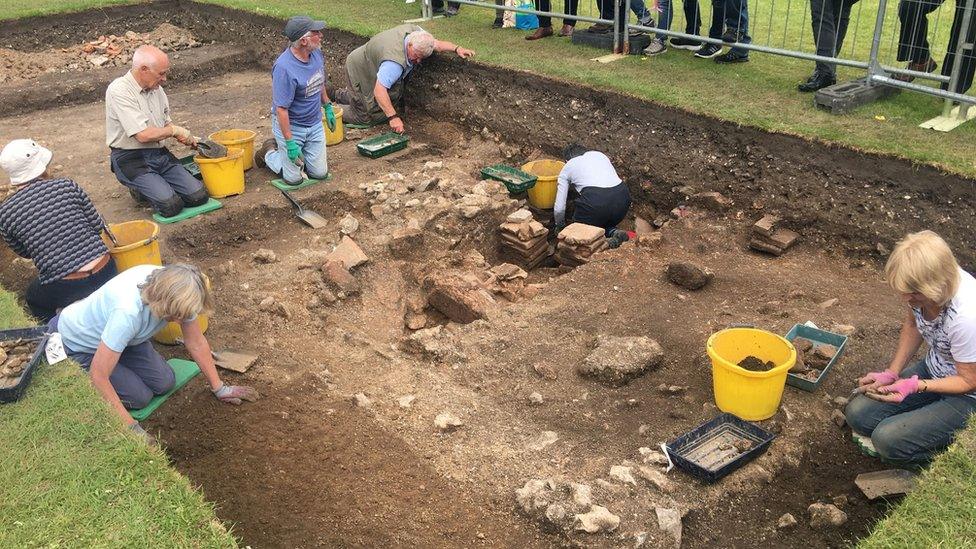
- Published26 January 2017

- Published26 January 2017
